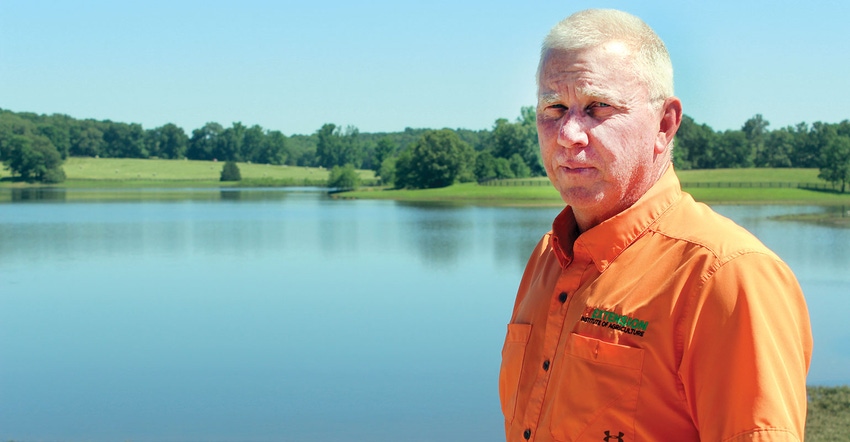
As the inner-city high school student hesitantly extended his arm, Ron Blair pushed back the sleeve of his hoodie and proceeded to cover the young-man’s arm with fresh mud from the bank of Lost Pond. “See, that wasn’t so bad,” Blair said quietly, as the high school student nodded in silent agreement.
There began another success story of opening the eyes of a student to the world of STEM for Ron Blair, director of STEM education, Lone Oaks Farm, in Middleton, Tenn. “Sometimes it requires breaking down their comfort barrier to make that light come on in their heads,” says Blair. “When I do that and I’m able to see that look of curiosity and wonder in their eyes, I know I’ve got ’em. That’s why I love teaching.”
Blair could be relaxing on the porch of a long-planned-for retirement cabin in the woods, but after 38 years with the Extension service, he still had a burning passion to encourage and inspire students to dedicate their careers to science. “We don’t need more NBA players or professional golfers in the world, we need scientists and engineers that will develop farming products, processes, and technologies that will feed, clothe, and benefit an ever-expanding world population,” says Blair.
STEM and Lone Oaks Farm
Lone Oaks Farm is owned by the University of Tennessee. It was purchased almost three years ago when the UT Institute of Agriculture was looking for a site to develop a state-of-the-art 4-H Center in West Tennessee, but UT officials soon realized the resource-rich property deserved a much bigger vision and corresponding plan.
That vision and plan would include Blair, who tailored a STEM-based teaching curriculum replete with activities to get participants outdoors where they can learn through interaction with Mother Nature and what she offers.
“Classroom settings will always be a part of any educational system, and it’s a part of ours, but so is being in the great outdoors,” says Blair. “I want to open the minds of students to aspects of nature as they relate to the educational disciplines under the STEM umbrella.”
STEM, an acronym for Science, Technology, Engineering, and Math, is a curriculum which combines these disciplines with real-world applications to more effectively pique the interests of young minds. According to the U.S. Department of Education, while 28 percent of high school freshmen have shown an interest in STEM subjects, more than 55 percent of them will lose that interest by the time they graduate.
“We not only have to build student interest, we have to educate the educators, and that’s why we are becoming more involved with Ag in the Classroom,” says Blair.
A group of teachers from the McNairy County School System recently participated in the Ag in the Classroom training where they listened to Blair and other invited agricultural-based scientists provide insight into their areas of specialty.
Karla Burns, 2017 Teacher of the Year in McNairy County, clearly understands the need for a program like this. “I was brought up in the country and I understand agriculture,” says Burns. “Unfortunately, many children who come into our classrooms have no idea where we get the agricultural products we eat and use daily. Programs like this are not only needed, but are critical in helping teachers stay abreast of the latest trends and technologies across the agricultural horizon so we can update the ag-centric curriculums we use in our classrooms.”
Origin and The Future
Kathy and Scott Ledbetter are the former owners of the property and developed it into a top-notch registered Black Angus herd operation. The cattle-handling center they developed is among the premier cattle breeding and handling facilities in Tennessee. Today, UT manages a 100-head commercial heifer operation at Lone Oaks Farm in partnership with Tennessee Livestock Producers.
While the cattle-handling facilities are essential in managing the herd, including the breeding boxes, handling chutes, and calving pens, they also support the farm’s educational mission.
�“Although these facilities have a specific purpose when it comes to cattle, they lend themselves to our efforts to support the 4-H, and Ag in the Classroom programs,” adds Blair. “The sale barn is heated and air-conditioned, so it can be utilized all year.”
One of the most surprising but impressive things on the entire farm is the seemingly endless collection of early American hand tools that adorns the walls of the Sale Barn.
“It’s got to be the largest collection in the country, and maybe in the world,” says Blair. “I look at everything around me on the farm, and at times, it can be overwhelming to narrow down and focus on one project that will have the most impact with students, but it’s a challenge on which I thrive.”
About the Author(s)
You May Also Like




